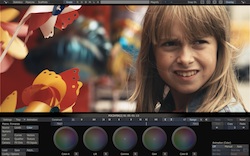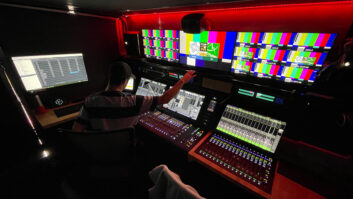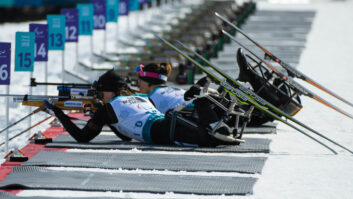
Wroclaw-based Divizion is a relatively new facility that has been surfing on the wave of a fecund cinema renaissance in the city, using Assimilate’s Scratch as its digital finishing system of choice for VFX and DI.
In less than a year since opening, Divizion has completed the DI on seven features, including ‘Cookie’, one of Poland’s biggest-budget productions, directed by Patryk Vega. Next up is the big-budget, 3D stereo horror-flick ‘Charnobyl 2012’, from the same director.
Divizion director and chief colorist Martin Kryjom explains how Scratch is helping to fulfil his company’s ambitions.
“Modern film factory: The paradigm of how films get made today, and in the future, has changed forever. We don’t use digital technologies like RED and Scratch because they’re low cost, but because they work. They let people shoot and finish productions to the very highest quality.
“Why Scratch? We evaluated many DI systems, some cheaper and some more expensive than Scratch, but they all had disadvantages. Some did not integrate so well with Final Cut, or the U/I was too complex. Others lacked tracking and effective keying, or would only let you work with proxies for projects shot using RED, rather than the native R3D files. With Scratch, the RED workflow is simplified.
“Testing, testing: High-quality grading is vital for me, so I tested Scratch’s primary and secondary colour grading capabilities, tracking masks and keying. All fine. In fact they give you lots of creative opportunities.
“I also discovered the RED 4K workflow in Scratch was really smooth. It was amazing to upload RED data from disk, import an EDL from Final Cut, do the conform and be able to work on the full, 4K resolution RED RAW files in Scratch – in real-time – within moments. Perfect!
“Vital ingredient for ‘Cookie’: Scratch was the hub for the post production workflow on ‘Cookie’, handling the best light and technical grades for 270 VFX shots including blue-screen, 16 different conforms, as well as the master grade and the finish to DPX for film-out. We even constructed the title sequence in Scratch, using animated masks and VFX mattes in the alpha channel to combine with the live action.
“Colour grading: ‘Cookie’ generated 12Tb of RED RAW material from three cameras, and each of these had different colour temperatures. The initial task was to balance the footage, and apply a clean, natural grade. This is fast in Scratch as you can compare shots on different Constructs or Trays, and copy and paste grades between sequences. This would have taken far longer on any other system.
“Scaffolds: Scaffolds is perhaps the most important tool in Scratch. Because of the tight production schedule on ‘Cookie’, a fair amount of footage was either under or over-exposed. Because of Scratch’s optimised workflow and capabilities with RED RAW files, we were able get the most out of the available data, to isolate and track areas of the image, and to salvage detail from the highlights or boost dark areas.
“Magnificent seven: We’ve completed seven features since getting Scratch, all shot on RED, so we know the workflow inside out, back to front. We just finished ‘Dance Marathon’, directed by Magda Lazarkiewicz (sister of famous Agnes Holland), and a spy thriller ‘Recruited Love’. We’re about to start on ‘Charnobyl 2012’, a big 3D stereo production for Patryk Vega.
“Ideal for 3D: Scratch is perfect for 3D stereo as the capabilities for viewing, adjusting convergence, equalising the grade on the stereo pair, and applying the master grade are all built in.
“LUTs: We grade mainly on a 5.5m-wide screen and use the CineSpace colour management tools that come pre-loaded into Scratch. The CineProfiler and EqualEyes tools let us set up an accurate, calibrated path for DI. Using the CineCube we prepare and apply 3D LUTs, and can see an accurate preview of the final film print, typically to Kodak 2383 or 2386 print stocks, in our digital projection theatre. This gives both us and our clients reassurance and confidence.
“Wise Investment: I’m very glad to have invested in Scratch. It makes us very competitive against other post houses on price and quality, and paid us back after just one film! The software is never out of date. Assimilate’s R&D team is always looking ahead and quick to respond to fresh developments, like the new RED Scarlet and Epic sensors. Scratch is a serious, grown-up DI system, and its best days are still ahead.
“Epic 5K Future: With Scratch I don’t worry about the future. We have invested in RED stage 2 Epic cameras that will work in 5K, which are much more demanding than the RED ONE cameras. We know Scratch already supports Epic, but does anybody else? Not really, as the camera isn’t yet on the market!”







